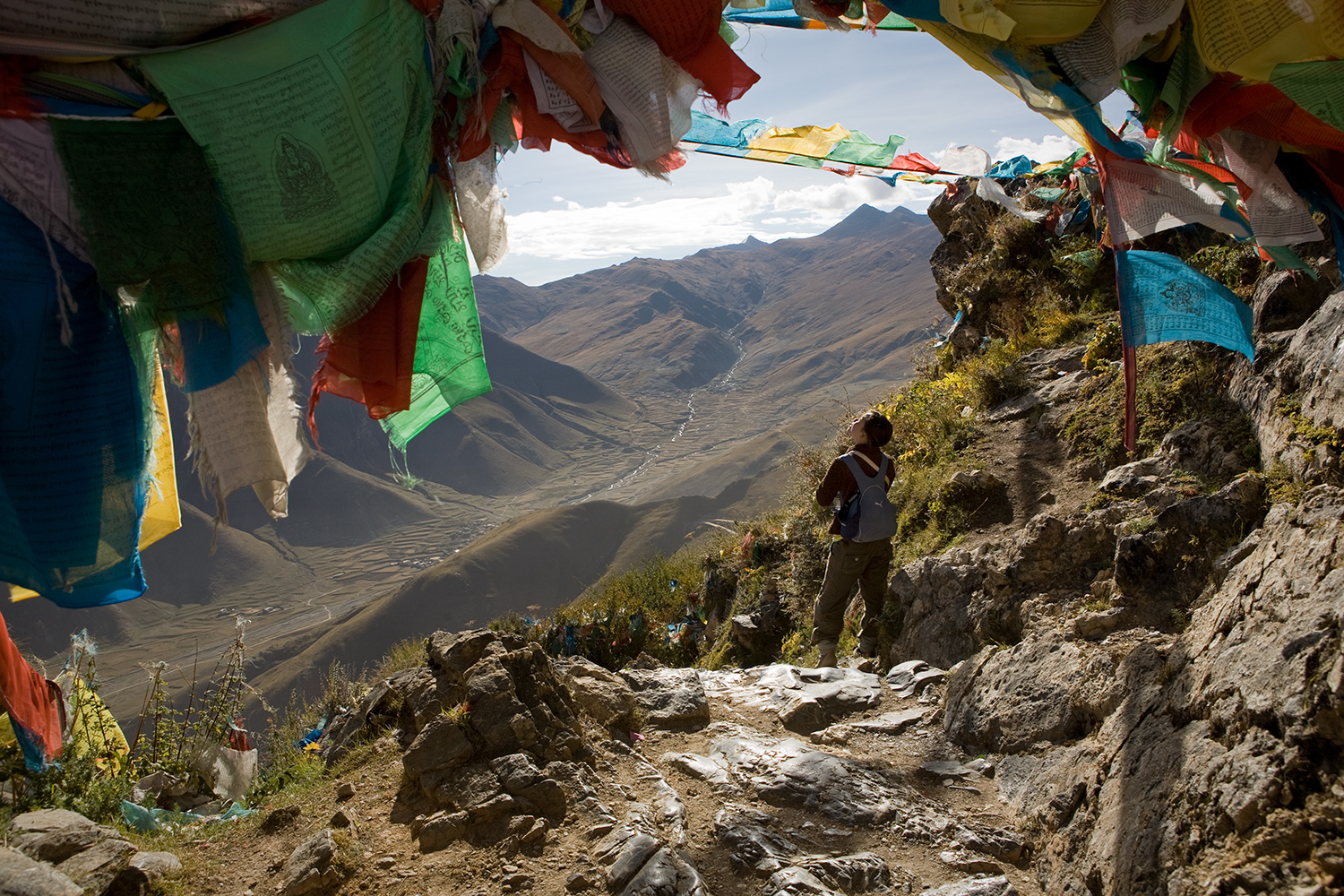
Helen Le, a visitor from England, walks the Ganden monastery kora. Walks around monasteries, temples, and other sacred sites, are a meditation.
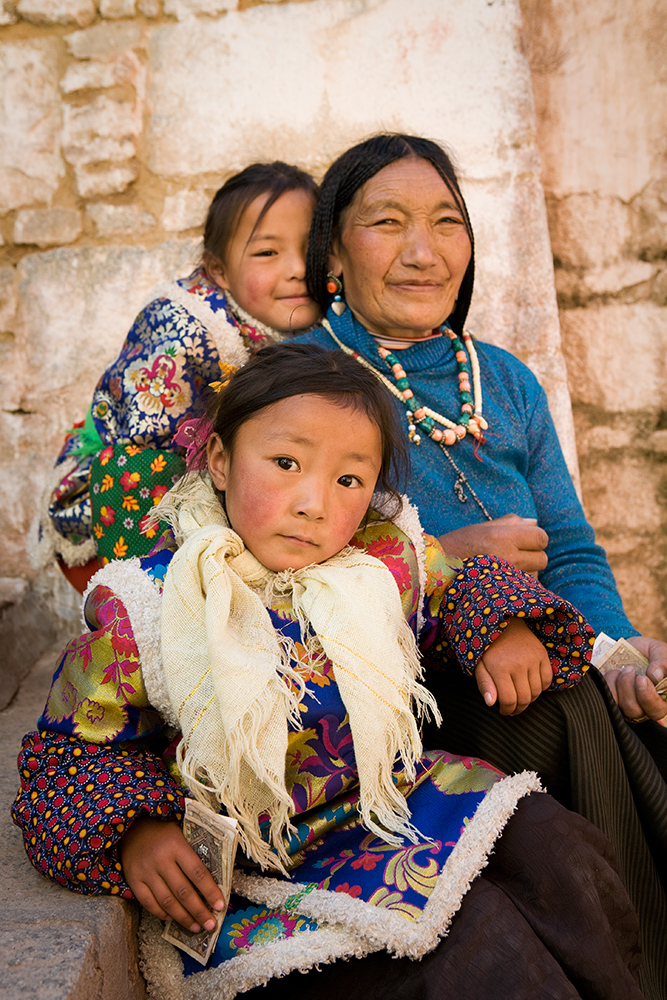
A pilgrim family at Ganden monastery.
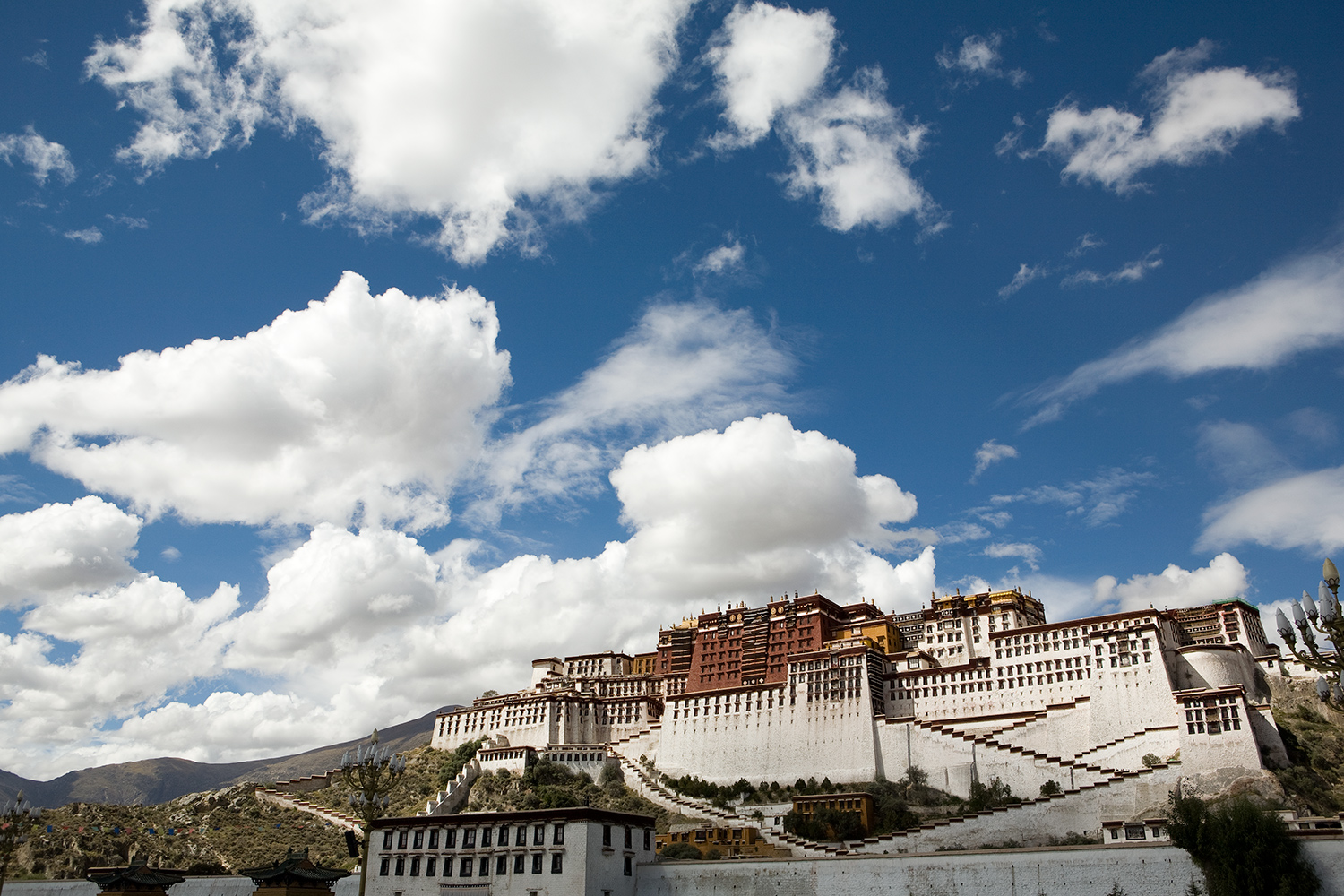
The Potala Palace in Lhasa is where the 14th Dalai Lama would be living if he still lived inside Tibet. He fled the palace in 1959 for asylum in India.
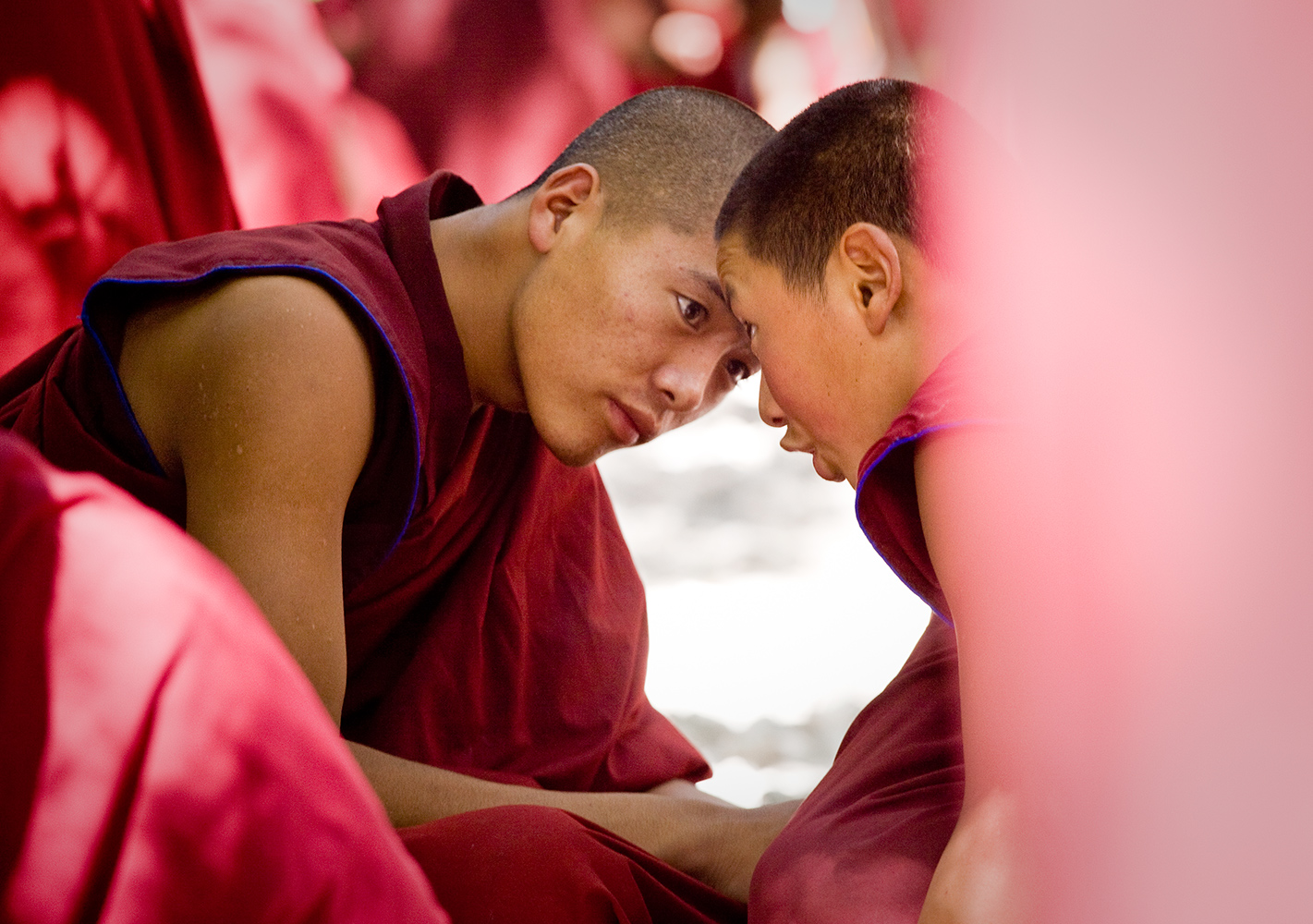
Two monks sit deep in conversation at Sera monastery outside of Lhasa. Every afternoon the monks debate about Buddhist principles and theology.
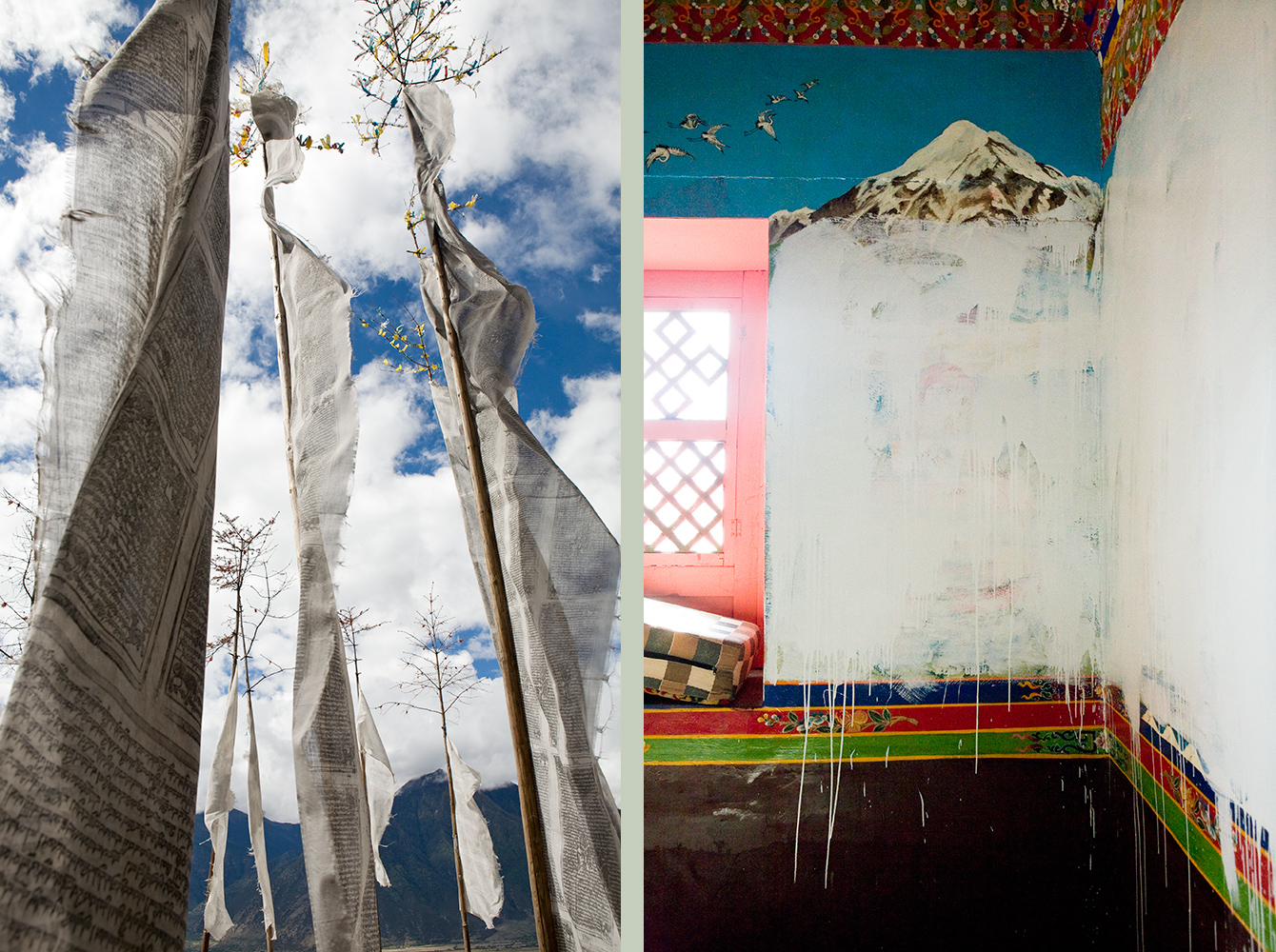
In the town of Nyingtri, Bön prayer flags whip in the wind, left.
A few miles away, a Bön monastery's walls were painted over by the Chinese authorities. It was believed the murals were destroyed because the government does not officially condone the religion. The shamanistic religion shares history with Buddhism, but has fewer adherents in Tibet.
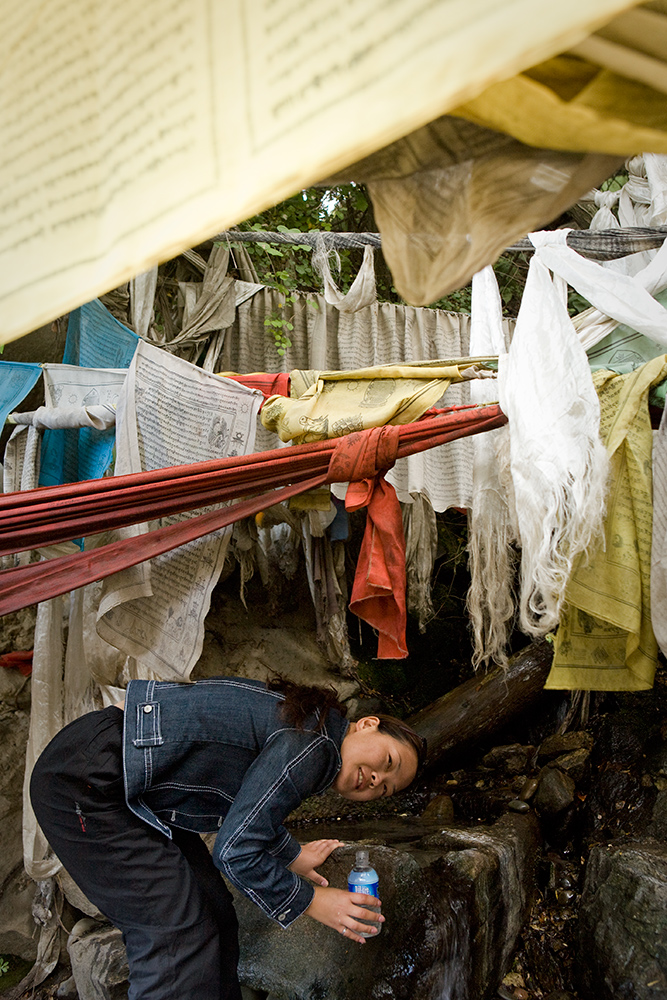
Pilgrims drink water and wash their faces in the holy water coming from the Benri mountain, a holy place for the Bön religion. After drinking, a Chinese woman poses for her father's camera.
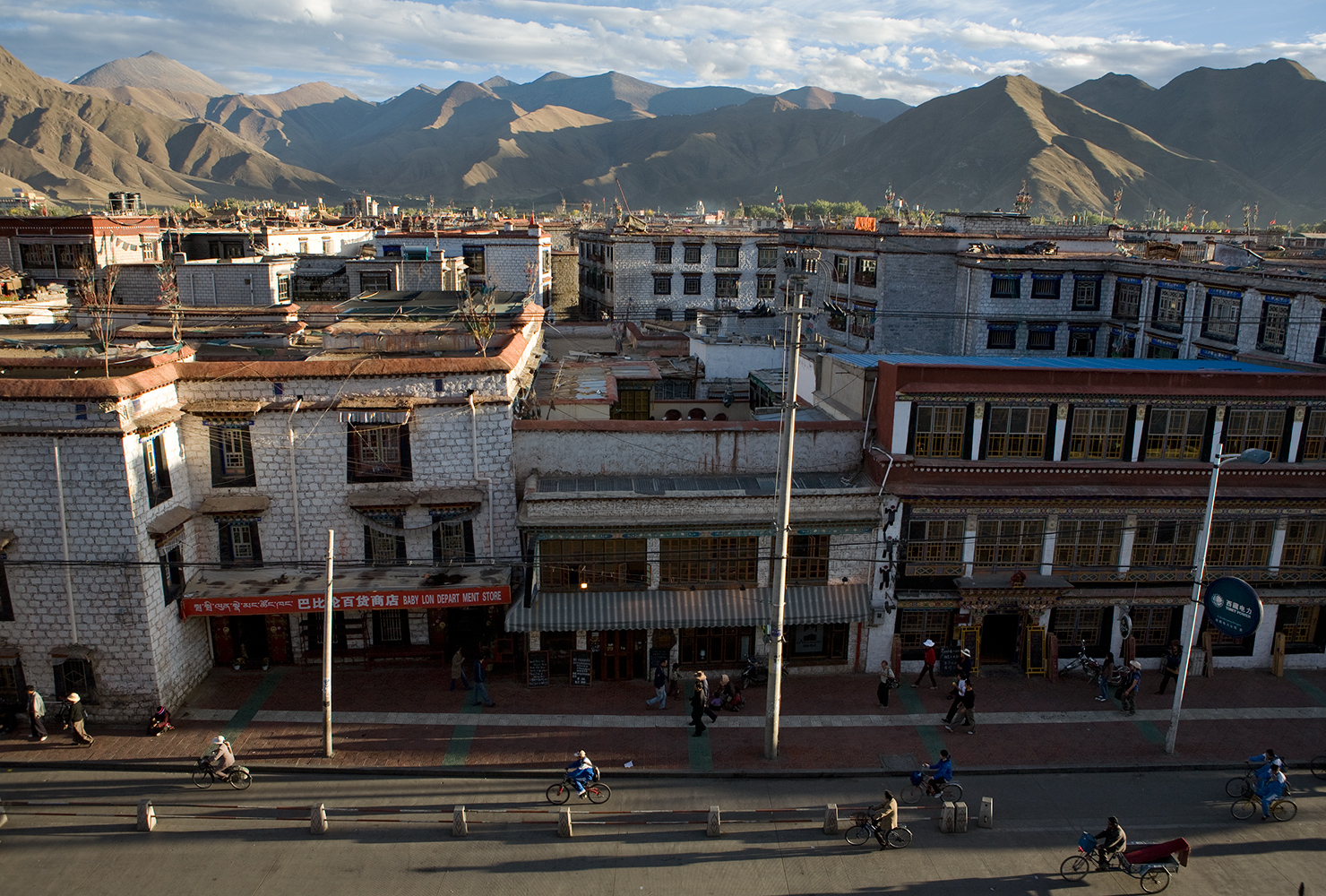
Mountains surround Lhasa, the capital of Tibet.
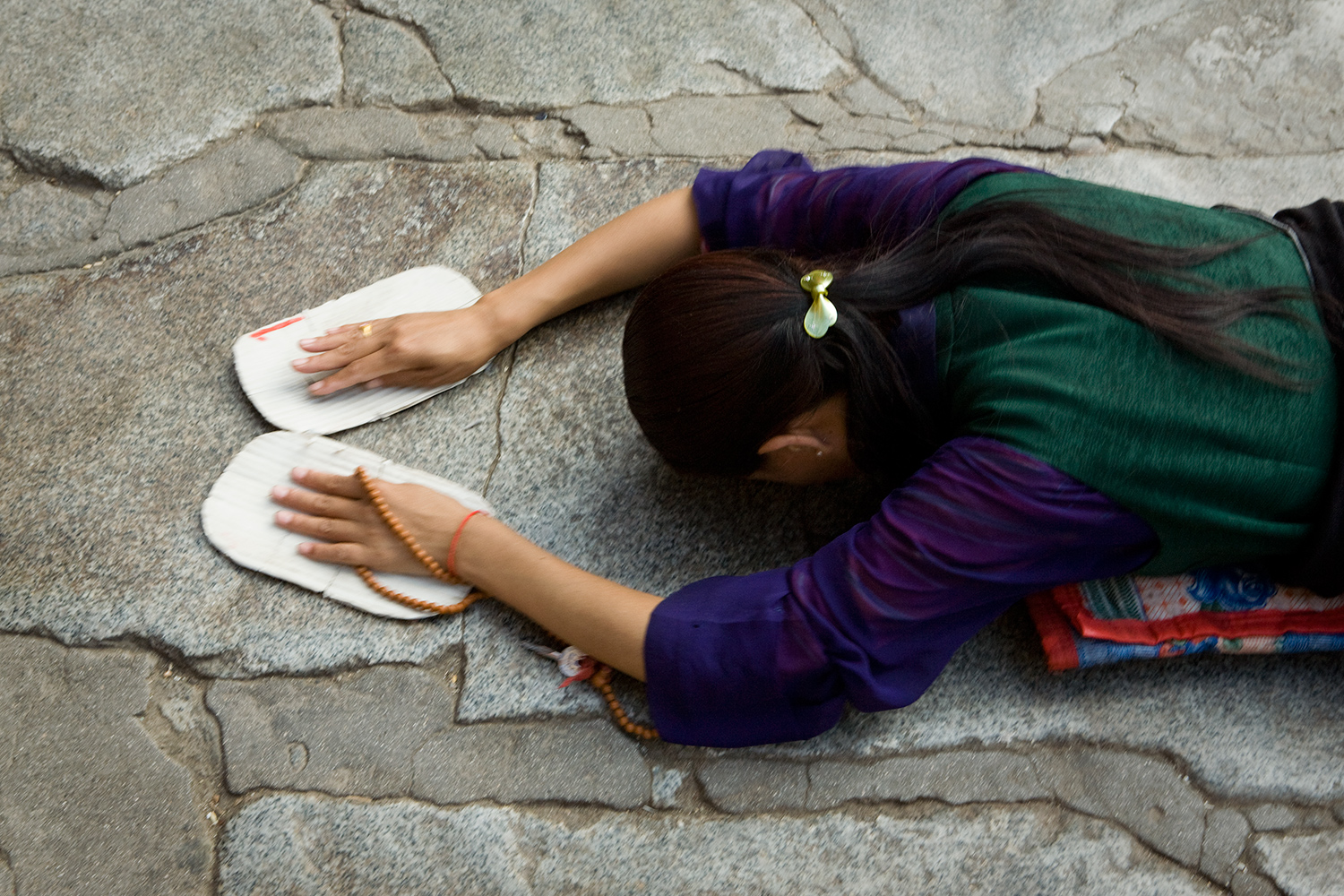
A pilgrim prostrates herself repeatedly in front of the Jokhang, the first Buddhist temple in Tibet, which many considered to be the most sacred and important temple in the country. The devout make pilgrimages to the sacred sites in Lhasa, traveling hundreds of miles by prostrating themselves the entire journey.
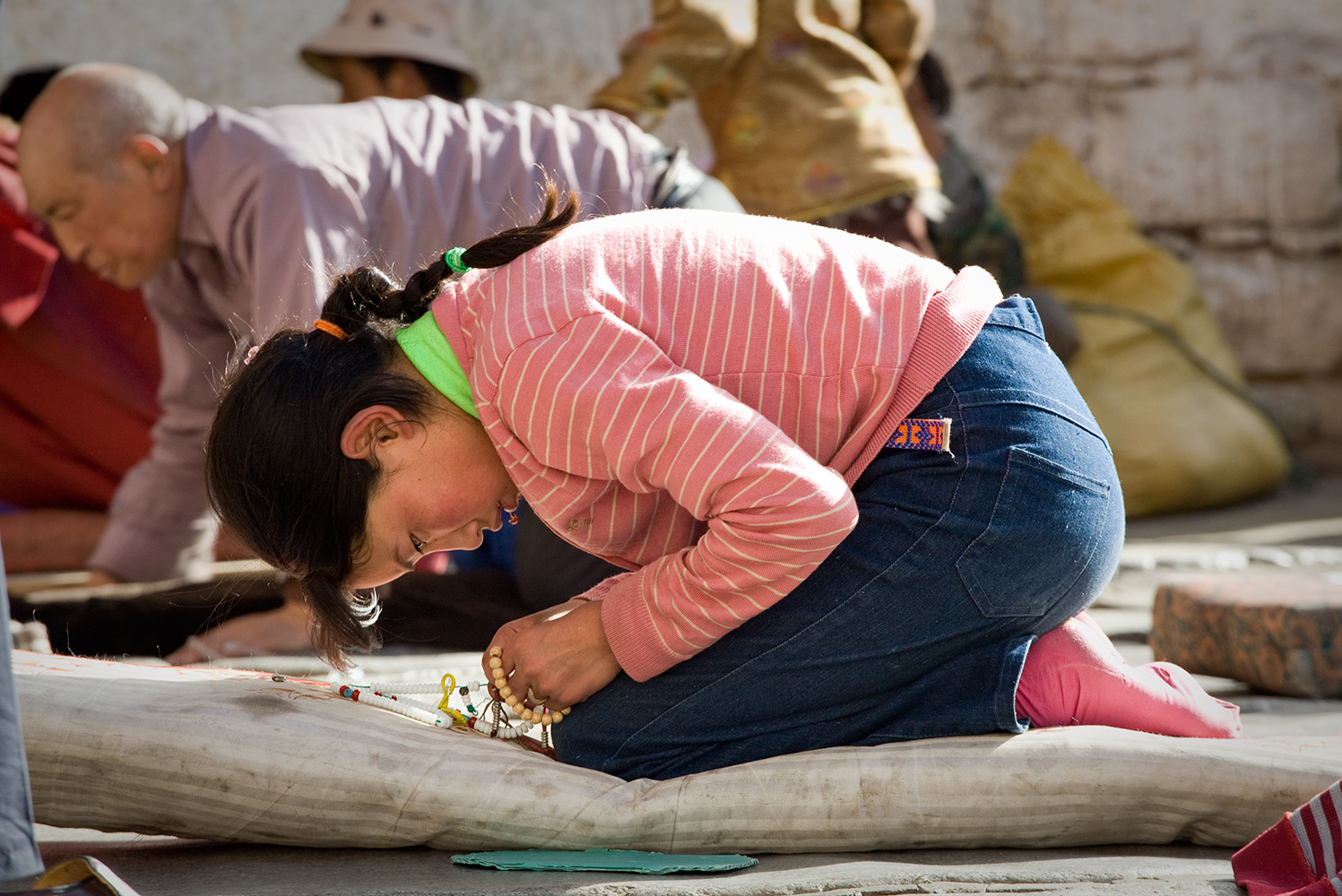
Engrossed in her mala, or prayer beads, a young pilgrim rests from her prostrating in front of the Jokhang temple in Lhasa.
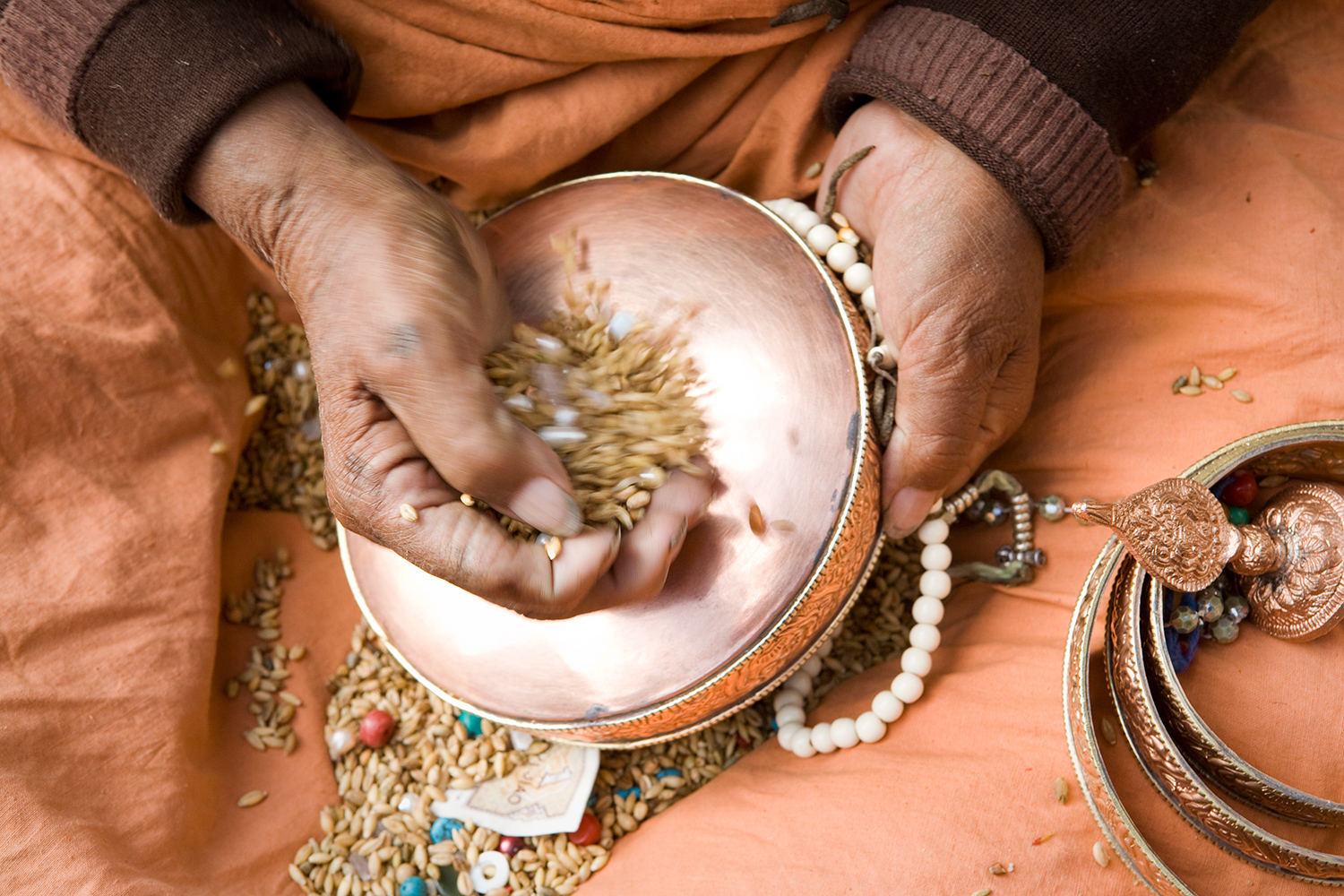
A woman hums a mantra while continuously pouring seeds and beads over a copper drum.
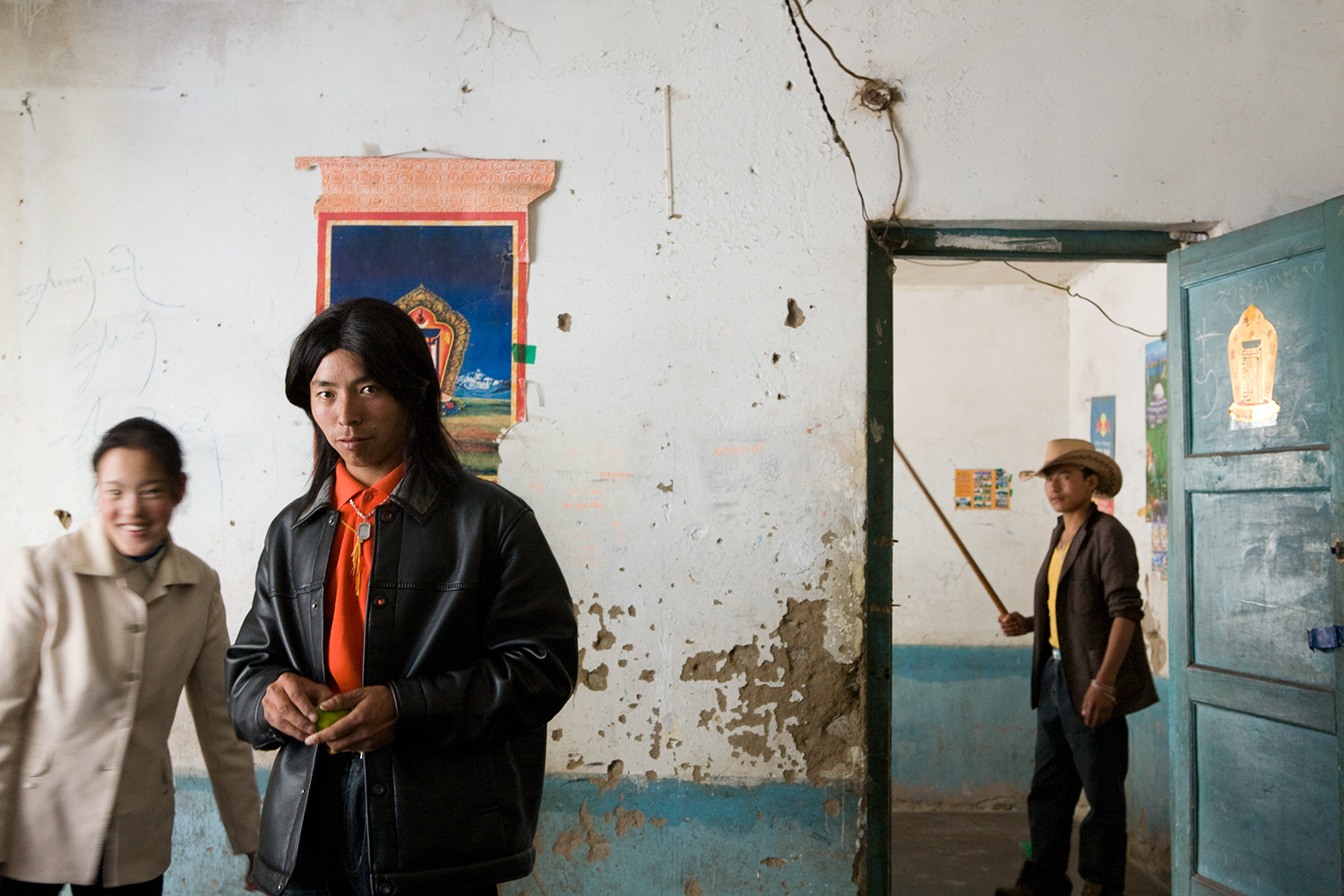
A pool hall in Lhasa.
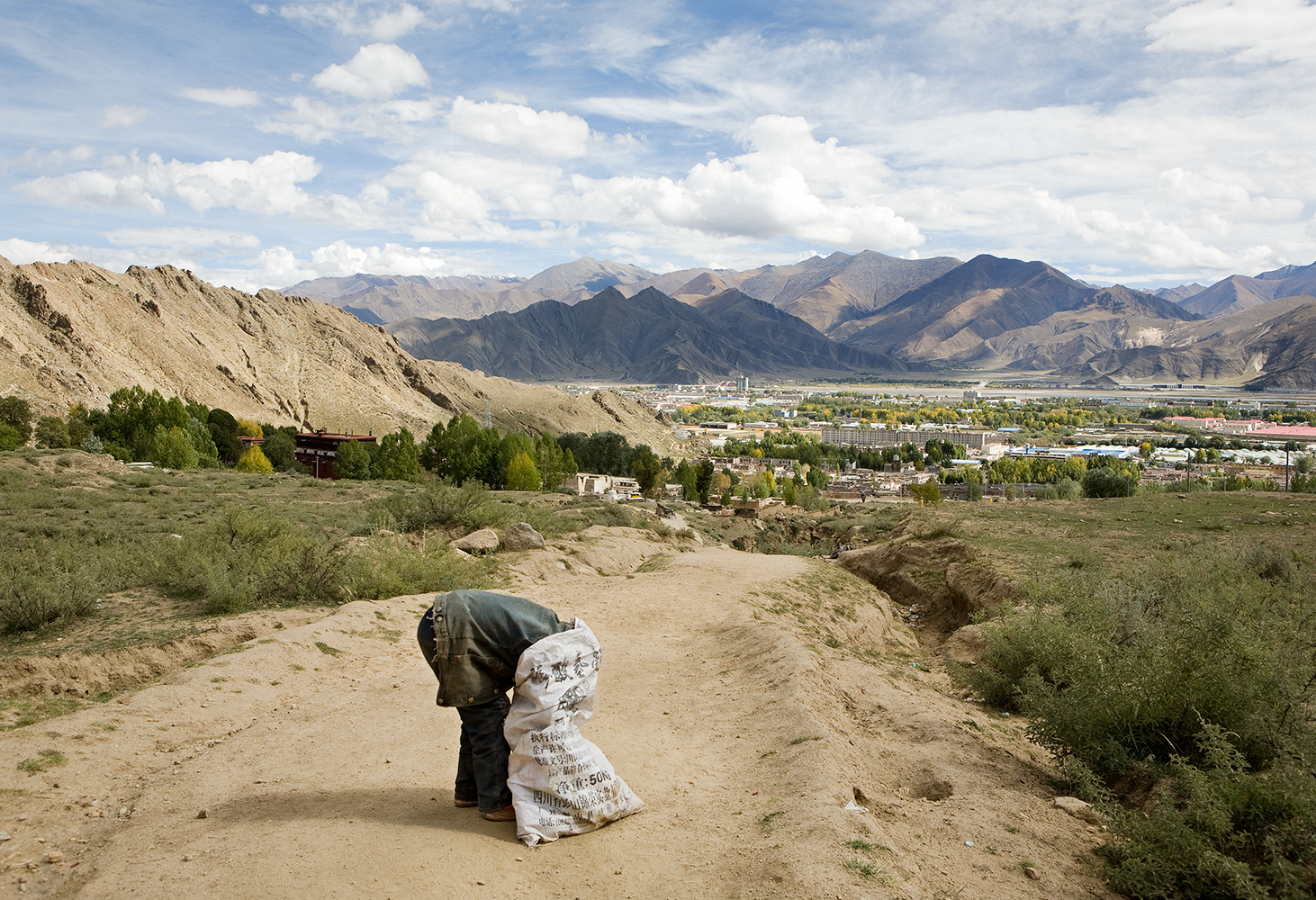
A boy noisily searches his feed sack full of possessions.
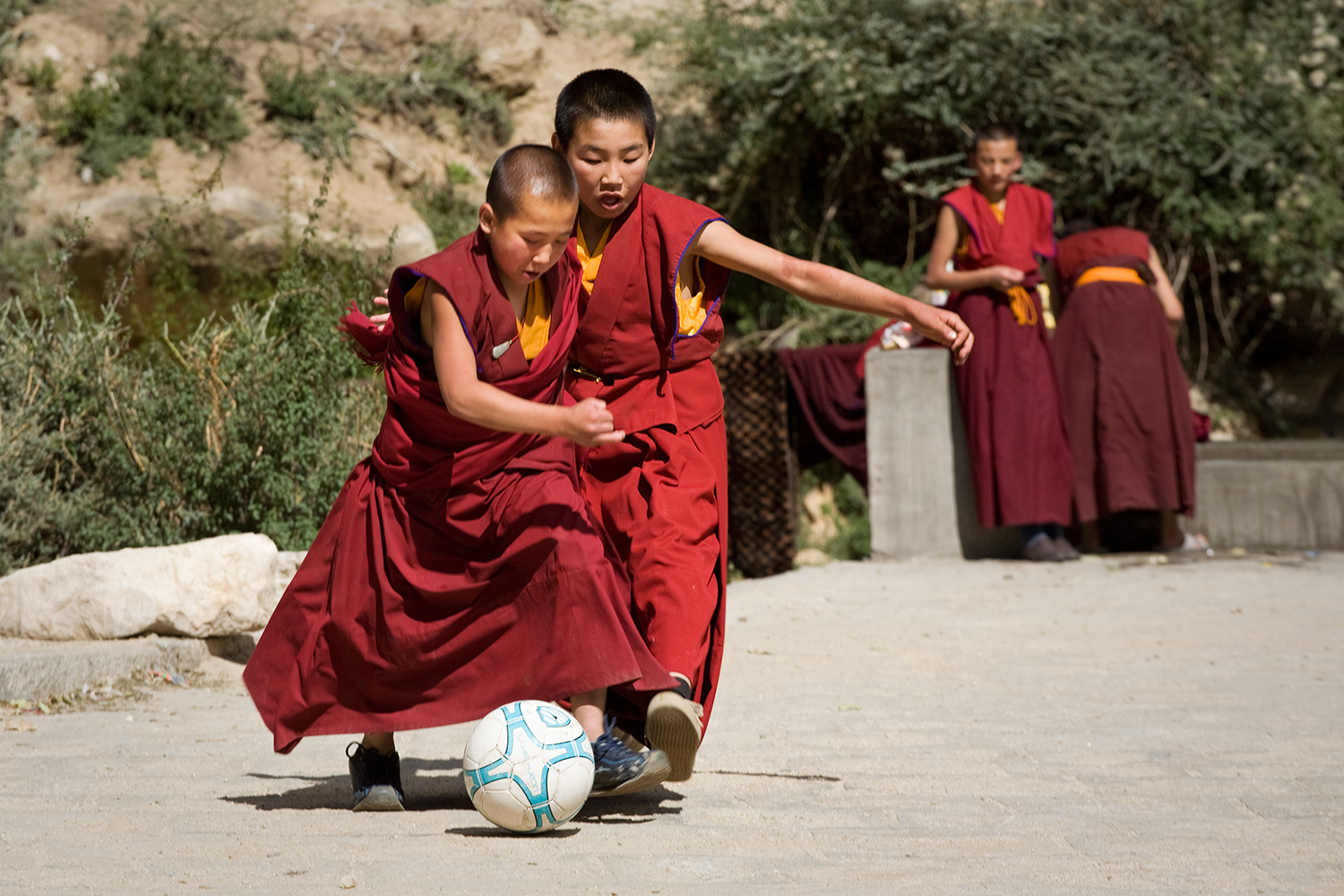
Young monks play at their monastery.

The Bön religion uses the swastika to symbolize what is eternal and unchanging.
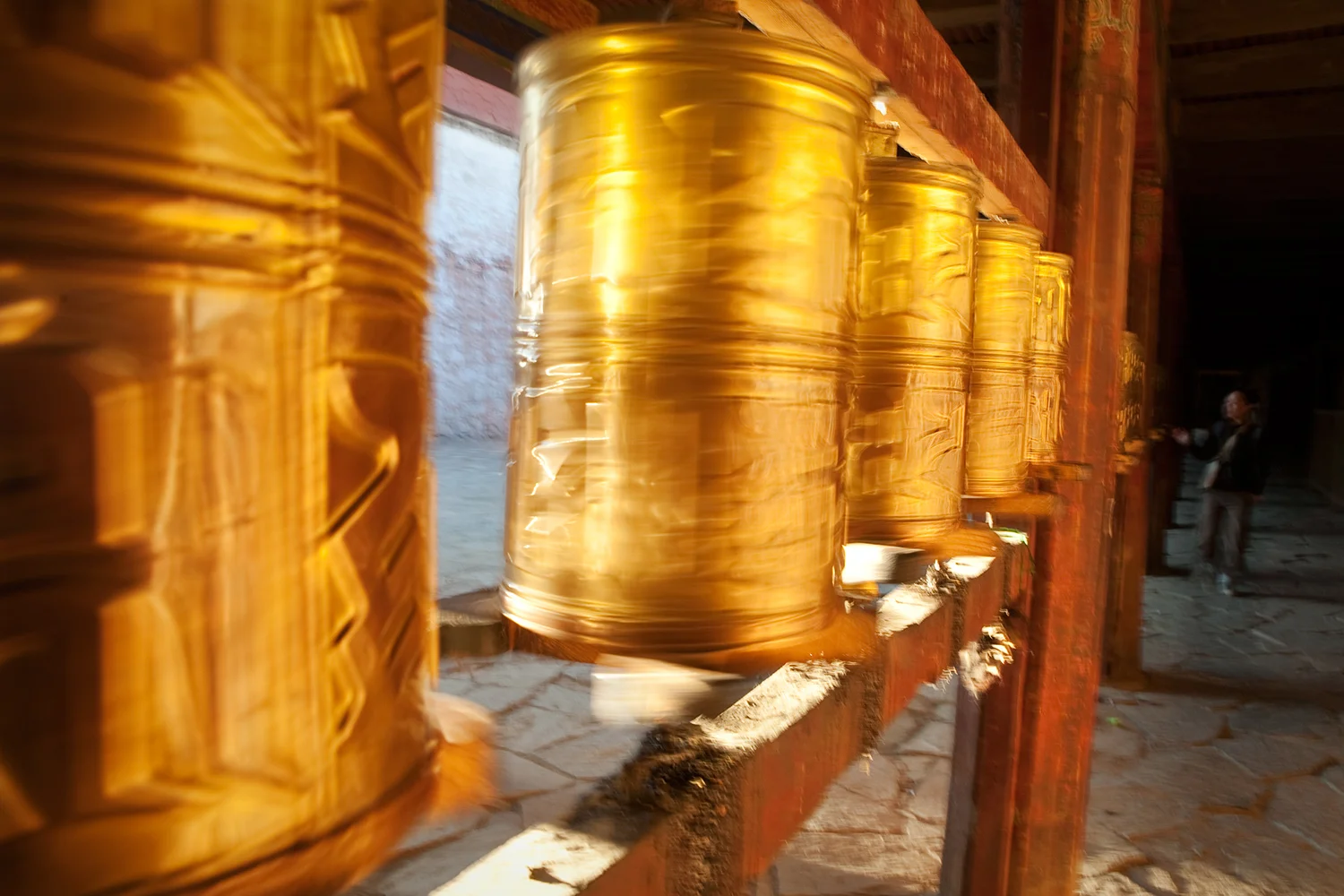
When a prayer wheel is spun, Tibetan Buddhists believe the mantra carved on it is activated.
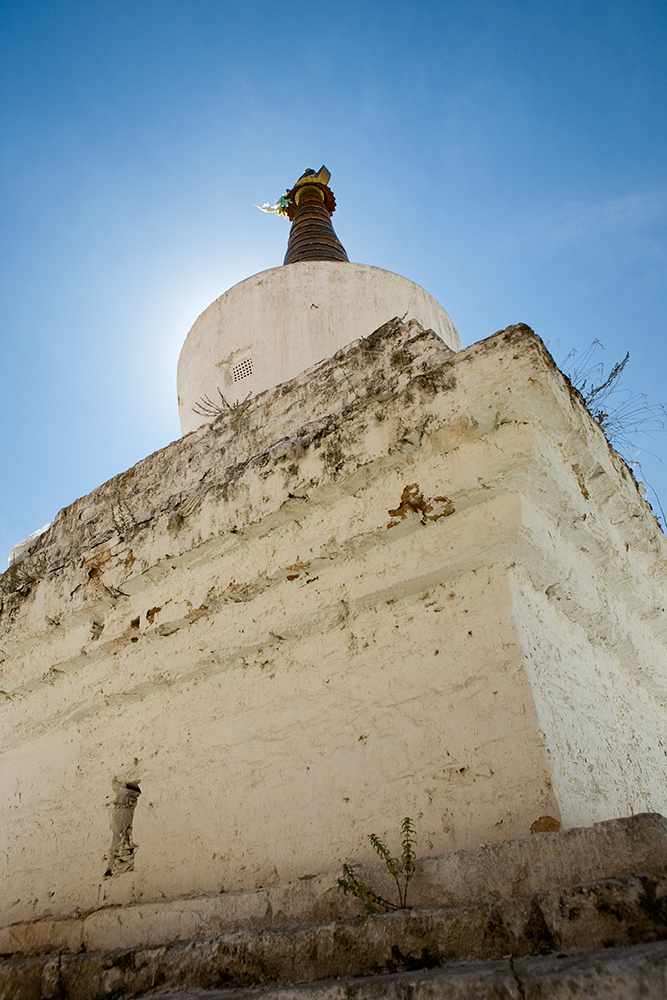
A stupa, or shrine, glows in the sunshine.
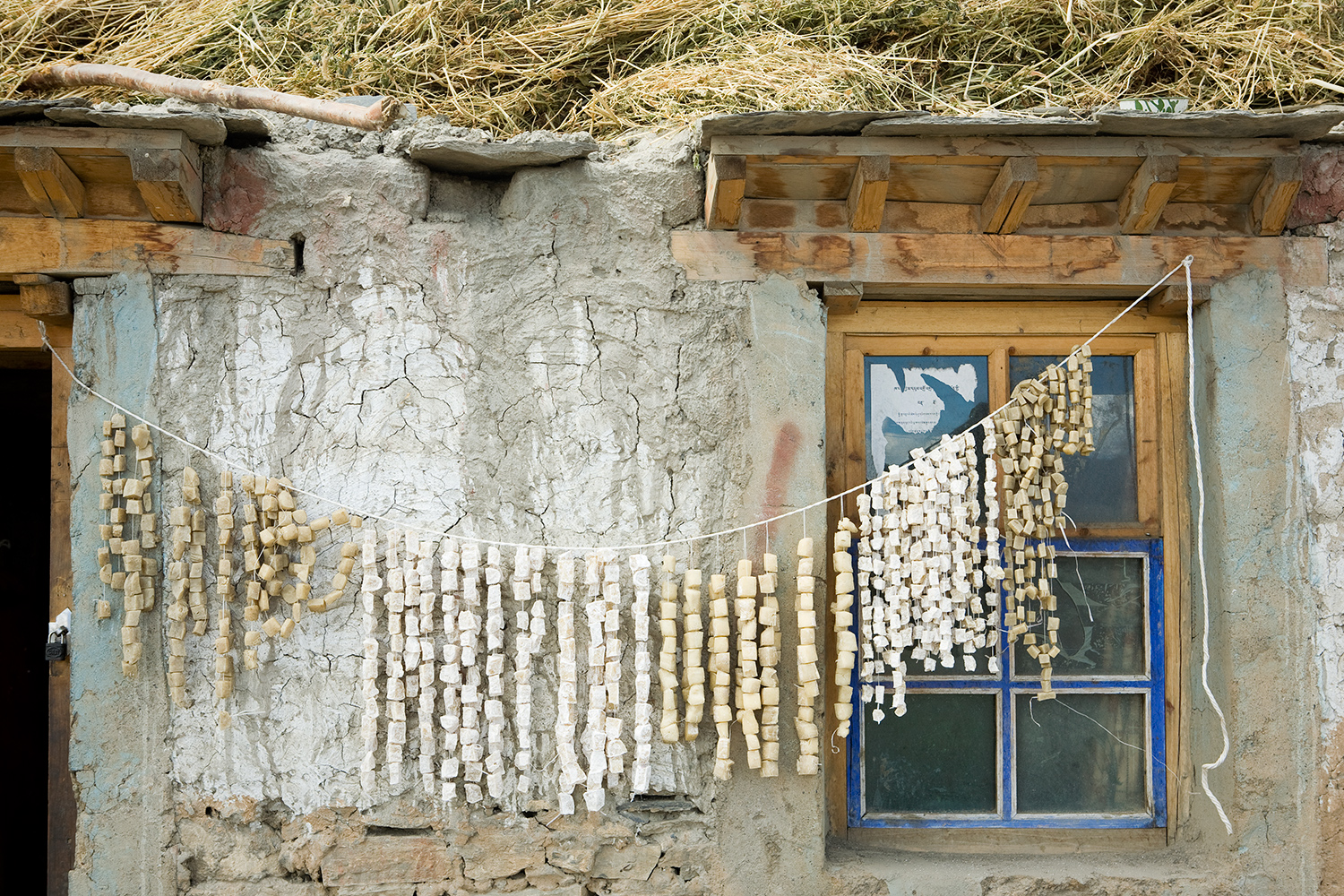
Squares of yak cheese, a hard mass that is eaten like candy, dries outside a home.
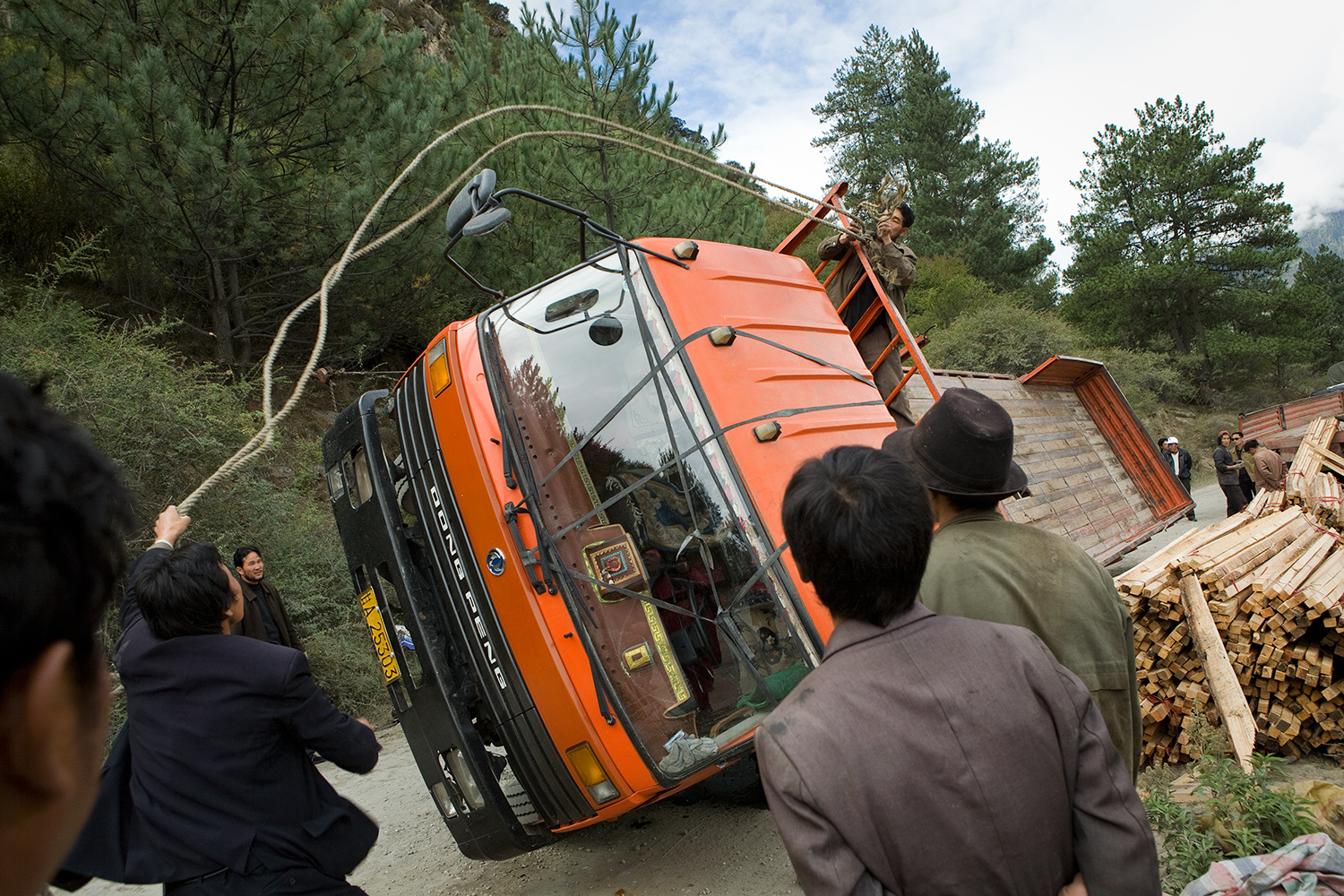
By tying a rope to a tree on the hillside and pulling together, men traveling in a bus helped upturn a truck in remote southeastern Tibet.
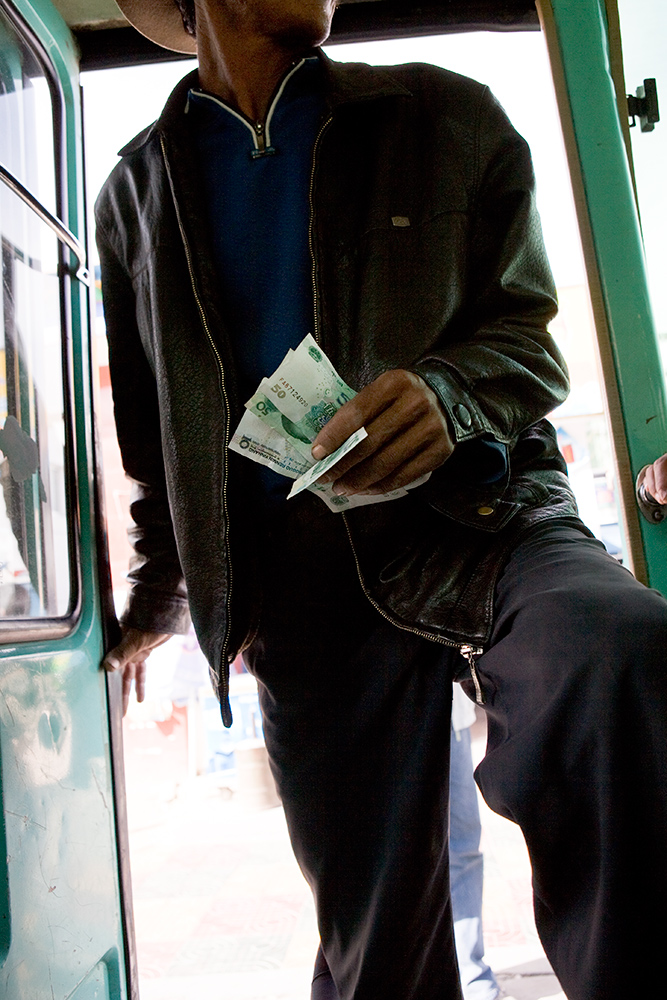
A Tibetan man boards a small bus traveling towards Lhasa from the countryside.
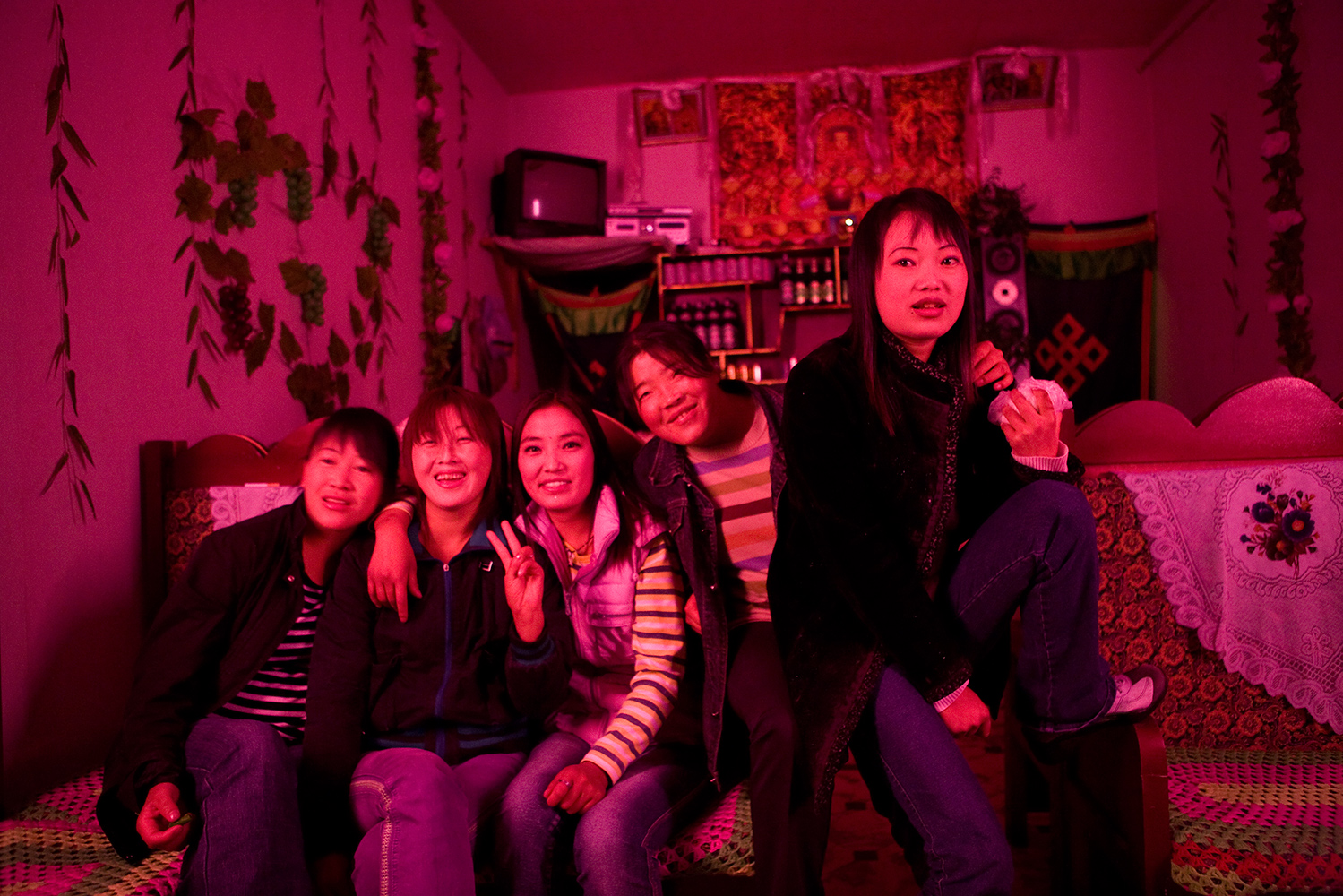
Women of the red light pose in Bayi, a Chinese town in Tibet whose name means “August 1,” or the day the People's Liberation Army was founded. The Chinese government forbade foreigners from visiting the town for many years, but now it is open for travelers.
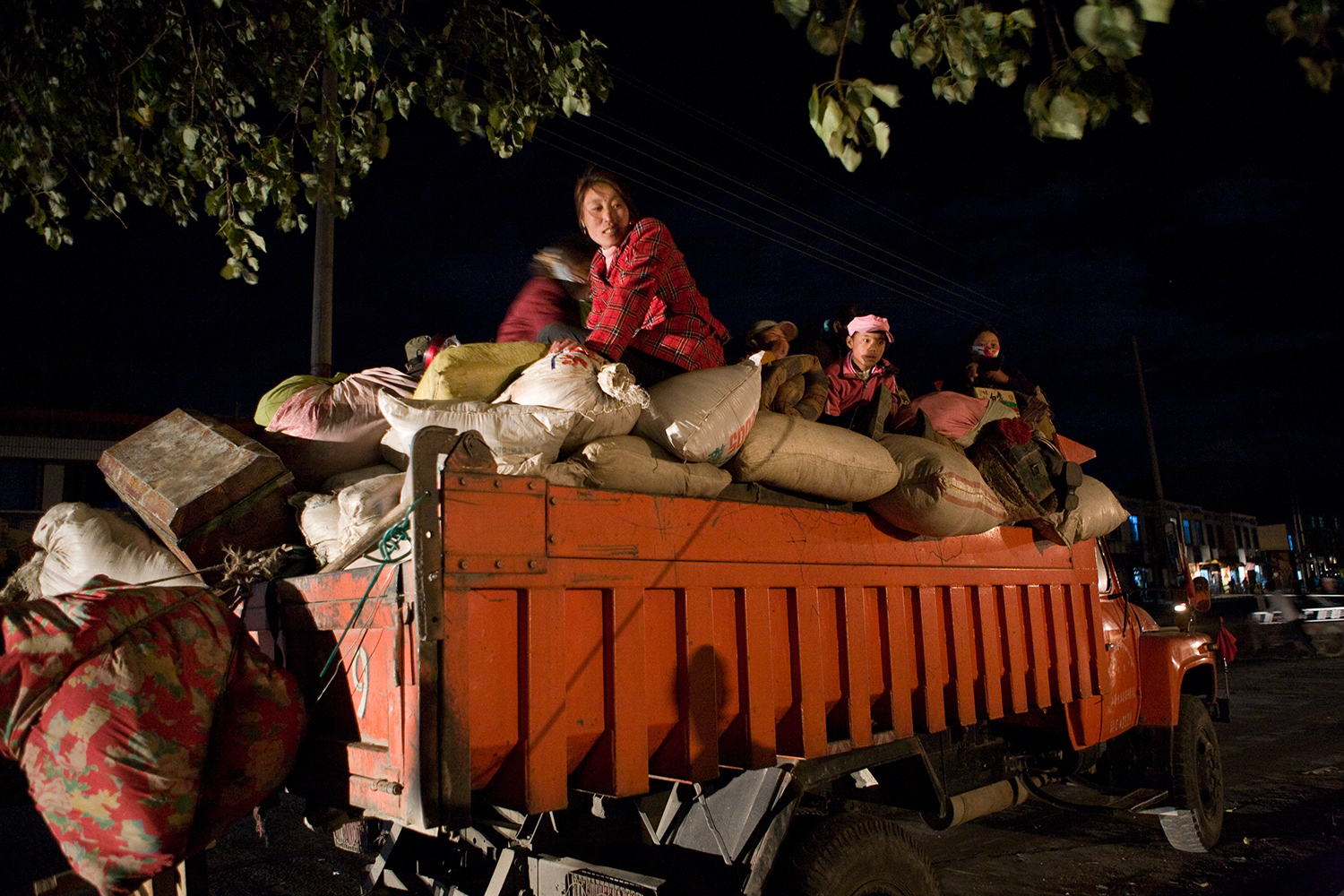
Ready for their journey, a family precariously sits on top of a truck’s cargo in Tsetang.
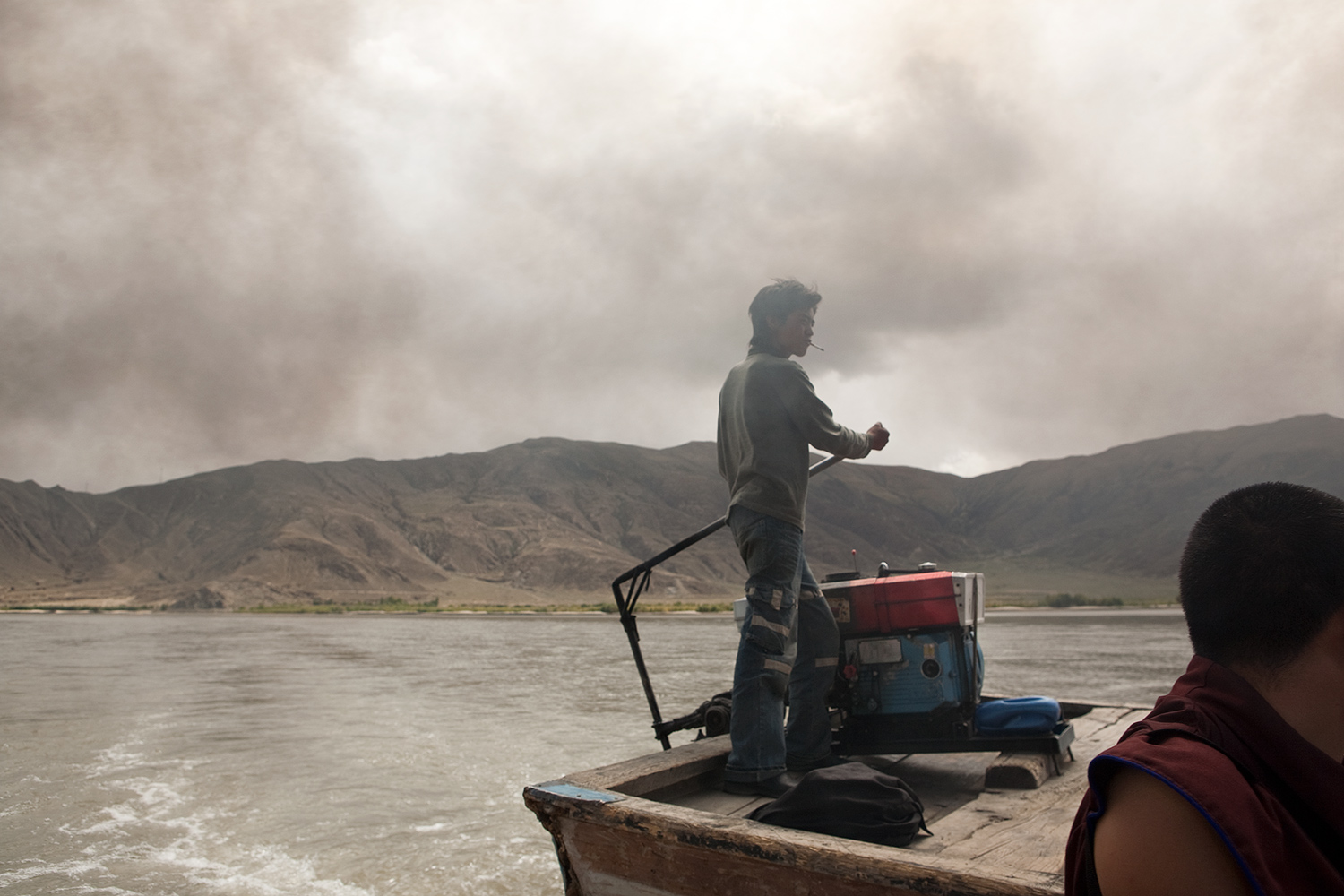
A man navigates a ferry across the Yarlung Tsangpo river for pilgrims traveling to Samye monastery, the oldest monastery in Tibet.
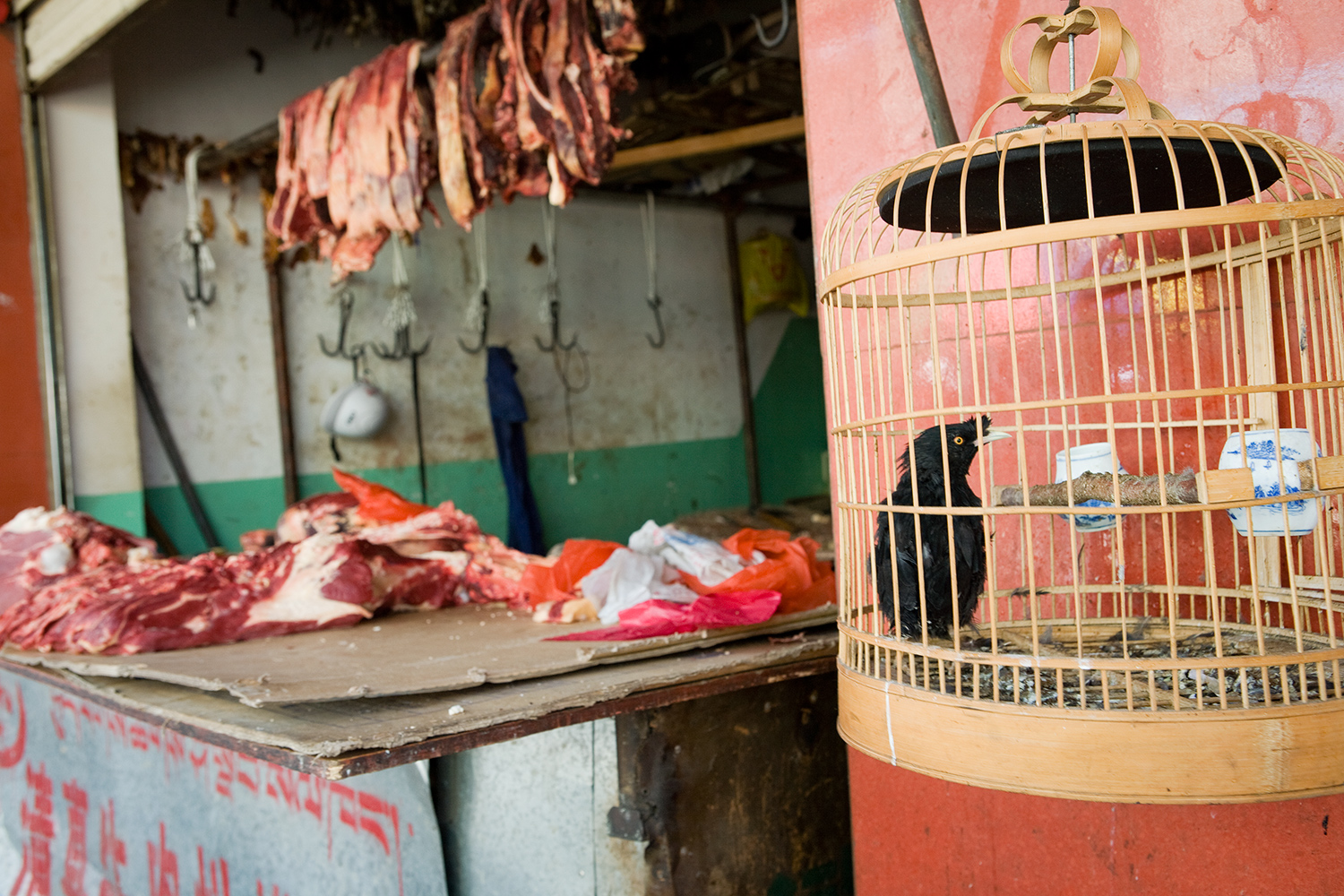
A butcher shop sells yak meat in the open air, Lhasa.























Helen Le, a visitor from England, walks the Ganden monastery kora. Walks around monasteries, temples, and other sacred sites, are a meditation.
A pilgrim family at Ganden monastery.
The Potala Palace in Lhasa is where the 14th Dalai Lama would be living if he still lived inside Tibet. He fled the palace in 1959 for asylum in India.
Two monks sit deep in conversation at Sera monastery outside of Lhasa. Every afternoon the monks debate about Buddhist principles and theology.
In the town of Nyingtri, Bön prayer flags whip in the wind, left.
A few miles away, a Bön monastery's walls were painted over by the Chinese authorities. It was believed the murals were destroyed because the government does not officially condone the religion. The shamanistic religion shares history with Buddhism, but has fewer adherents in Tibet.
Pilgrims drink water and wash their faces in the holy water coming from the Benri mountain, a holy place for the Bön religion. After drinking, a Chinese woman poses for her father's camera.
Mountains surround Lhasa, the capital of Tibet.
A pilgrim prostrates herself repeatedly in front of the Jokhang, the first Buddhist temple in Tibet, which many considered to be the most sacred and important temple in the country. The devout make pilgrimages to the sacred sites in Lhasa, traveling hundreds of miles by prostrating themselves the entire journey.
Engrossed in her mala, or prayer beads, a young pilgrim rests from her prostrating in front of the Jokhang temple in Lhasa.
A woman hums a mantra while continuously pouring seeds and beads over a copper drum.
A pool hall in Lhasa.
A boy noisily searches his feed sack full of possessions.
Young monks play at their monastery.
The Bön religion uses the swastika to symbolize what is eternal and unchanging.
When a prayer wheel is spun, Tibetan Buddhists believe the mantra carved on it is activated.
A stupa, or shrine, glows in the sunshine.
Squares of yak cheese, a hard mass that is eaten like candy, dries outside a home.
By tying a rope to a tree on the hillside and pulling together, men traveling in a bus helped upturn a truck in remote southeastern Tibet.
A Tibetan man boards a small bus traveling towards Lhasa from the countryside.
Women of the red light pose in Bayi, a Chinese town in Tibet whose name means “August 1,” or the day the People's Liberation Army was founded. The Chinese government forbade foreigners from visiting the town for many years, but now it is open for travelers.
Ready for their journey, a family precariously sits on top of a truck’s cargo in Tsetang.
A man navigates a ferry across the Yarlung Tsangpo river for pilgrims traveling to Samye monastery, the oldest monastery in Tibet.
A butcher shop sells yak meat in the open air, Lhasa.
